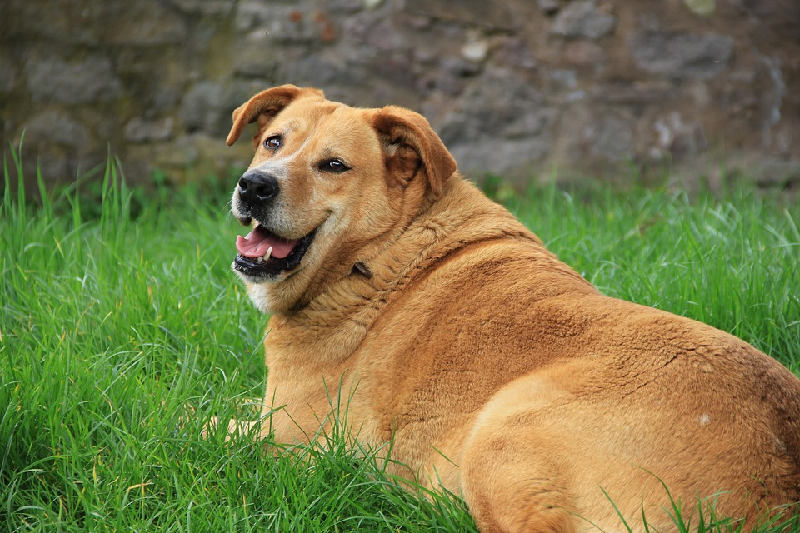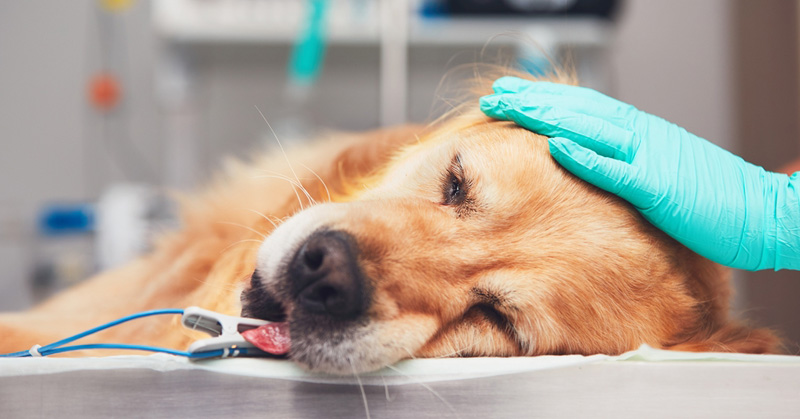There are things you should never to do to your dog. For example, dogs should never eat grapes or chocolate, or be left in cars on sunny days. Furthermore, you should never ignore possible signs of cancer in your dog. But how do you know what the signs of cancer are?
As most people like dogs more than humans, giving dogs the best care is a priority, including being on the lookout for signs of cancer. And, in fact, from dog skin cancer to breast cancer, cancer in dogs varies just as it does in people. But knowing some of the common signs of cancer in dogs may just save their life. While many of the following symptoms may be indicative of less serious conditions, if you see any of them arise in your dog, you should still speak to your vet. Read below to learn about possible symptoms of cancer in dogs.

Breast Cancer in Dogs
Just as with humans, female dogs can develop tumors in their mammary glands. And in recent years, dog breast cancer has been on the rise. (1) Both malignant and benign tumors frequently develop in dogs that have not been spayed.
Bone Cancer in Dogs
Osteosarcoma is the most common type of bone cancer in dogs. (2) Its growth rate is high and its symptoms are often subtle, but may include swelling, lameness and joint pain. Furthermore, in some cases, lethargy and a loss of appetite may be symptoms of bone cancer in dogs.
Dog Skin Cancer
Dog skin cancer can also easily go undetected, as your dog’s fur may be hiding signs. Be sure that when you pet your dog, you feel for any abnormalities, such as lumps, bumps or swelling. If caught early enough, many forms of dog skin cancer can be treated with success. Be on the lookout for these and other symptoms of cancer in your dog. (3)
Here are 11 symptoms of cancer in dogs you should never ignore:
1. Collapsing
Symptoms of cancer in dogs start with the scary sight of your dog collapsing. Should you see your dog collapse, you need to immediately take them to the vet. Collapsing, as well as weakness and lethargy, are common signs of cancer. What does lethargy look like? Watch for changes in their behavior. For example, if your dog usually acts excited when a guest is at the door but suddenly stops showing interest, take this as a sign of possible lethargy.
2. Coughing
Another sign of dog cancer is coughing. Note, however, that this symptom doesn’t immediately mean cancer. Some small breeds of dogs may develop a cough due to problems with their windpipes. And there are other conditions that could cause your dog’s cough. However, sometimes a cough can be a sign of lung cancer in dogs. A cough here and there, once or twice, isn’t a concern. If it persists, that’s when it’s cause for concern.
3. Weight Loss
This is, perhaps, the most prominent sign of cancer in dogs. Weight loss may indicate a gastrointestinal tumor. Furthermore, you may notice changes in their appetite. If you notice that your dog has lost interest in eating or has rapidly lost weight, speak to your vet ASAP.
4. Nosebleeds
When a child gets the occasional nosebleed, you may have them hold a tissue to their nose but otherwise shrug it off. Usually there is nothing too concerning in that case. However, as it is on the list of symptoms of cancer in dogs, a canine nosebleed should never be ignored. It can be a sign of cancer of the nose.
Is your dog younger or a puppy? If they have a nosebleed, chances are they may have a foreign object stuck in their nose. This is more likely than for a younger dog to develop cancer.
5. Diarrhea or changes in bathroom habits
Symptoms of cancer in dogs also include diarrhea or general changes in bowel movements. Occasional diarrhea is probably not a concern or a sign of cancer in dogs. If the diarrhea worsens or persists, however, you need to get your dog to the vet.
You may also notice that your dog is constantly asking to go outside to go to the bathroom. Or they might have a hard time urinating or making a bowel movement. Furthermore, they may be vomiting, or you may notice blood in their urine or stool. All of these should be checked out. These symptoms as well as incontinence may be signs of bladder cancer in dogs.
6. Discharge
If you notice a persistent dripping or discharge coming from your dog’s nose or eyes, you should contact your vet. These are signs of dog cancer. Nasal discharge, for example, can be a sign of facial tumors. And a goopy or drippy eye can indicate a possible eye tumor.
7. Mouth changes

Changes in the mouth are also on the list of signs of dog cancer. These changes include sores, lumps, a strange odor, bleeding, or a change in gum color. You should be examining your dog’s mouth on a regular basis, because many of these symptoms can go unnoticed for far too long. Try watching your dog when they yawn or eat to see if you notice anything out of the ordinary.
8. Seizures
Typically speaking, seizures are more prominent in older dogs, but they are indeed a sign of a possible brain tumor. Here’s what else you should be looking for: sudden and uncontrolled bursts of activity, such as champing and chewing, jerking legs, or foaming at the mouth. These symptoms may indicate a seizure. Contact your vet immediately.
9. Skin changes
Should you see a lump, bump or changes in your dog’s skin, it’s of utmost importance that you get him to the vet. It’s better to get it checked out, even if you suspect it’s nothing. Be sure to check your dog for lumps or bumps when you pet him, and also feel around for any swelling. Also note any lesions or sores that don’t seem to be healing.
10. Weight gain

Weight gain, just like weight loss, can also be a sign of dog cancer. If your dog is eating less but still gaining weight, take her in to get checked. Furthermore, a sudden increase in appetite is also cause for concern.
11. General pain or discomfort
Another really prominent sign of cancer is pain. (4) When you pick up your dog or pat his belly, does he whimper, cry or whine? If so, take him to your vet. You may also notice discomfort when your dog eats—this can be a sign of a mouth tumor.
Learn More: Dog Health and Behavior
What foods should you be feeding your dog? And have you ever wondered why your dog tilts its head? If you’re concerned about your dog’s health or behavior, there are ways you can help. Give your dog coconut oil, for example, to offer them a variety of benefits, including an immunity boost. This may help decreases their chances of developing diseases such as cancer.


